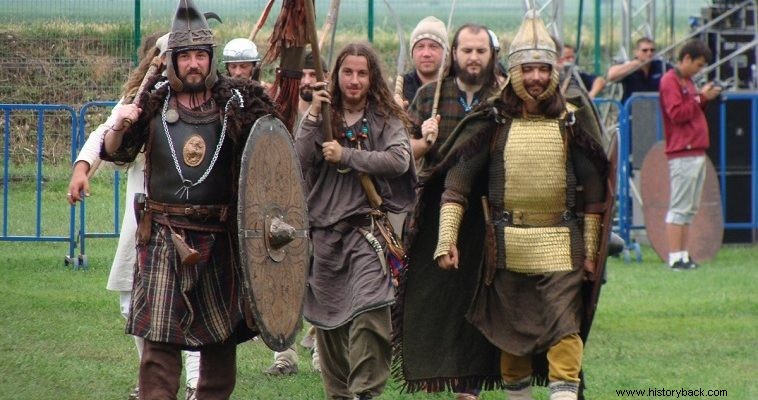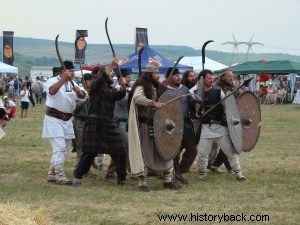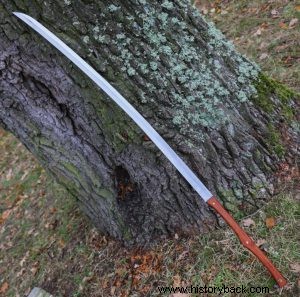
The Dacians were a Thracian race that inhabited the regions of present-day Romania. They were fierce warriors forcing the "lords of the world" into long struggles for their submission.
The Dacians were among the most advanced northern Thracian races. Their organization was tribal. At the top of their social pyramid was the king. Next came the nobles, the free peasants, and the slaves. Although they were mainly engaged in the cultivation of the land and fought mainly among themselves, they sometimes launched destructive raids even against the Romans.
In 85 and 87 AD the emperor Domitian campaigned against them to no avail. Emperor Trajan managed to subdue them after two very harsh and bloody campaigns in 101-102 AD. and 105-106 AD
The Dacians fought mainly on foot. A few nobles owned horses and fought as light cavalry throwing javelins at opponents. The infantry was numerous, which is reasonable, if one considers that the terrain of the country with its hills, mountains, dense forests and many rivers favored its action.
The infantry was armed with an oval-shaped, shield-type shield made of wood. The poor warriors now carried only the shield as a defensive weapon. As offensive weapons they carried a number of javelins and a medium-sized sword or knife. The nobles carried a shield, a helmet and sometimes a breastplate. They were also armed with swords and javelins or light spears that could be thrown.
The kings were equipped like the nobles. A small number of foot soldiers fought in a strafing formation with the men carrying bows. A number of men both native Dacians and Elydian Sarmatians carried a heavy, single-edged sword, the falx, similar to the saber of the southern Thracians.
This weapon, with one blow, could cut the opponent to pieces, even if he wore armor and was the fear and terror of the Roman legionnaires. To deal with him, Trajan ordered the strengthening of the armor of his legionnaires.
The Dacians fought in relatively loose order, preferring to surprise the enemy by attacking them through forests, or by ambushing them in difficult terrain. In the attack they came galloping towards him, discharging their javelins, at a short distance from him, and then charging with their swords or killing swords.
In defense they awaited the enemy by launching against him every available projectile, with the aim of causing casualties and disorder which they would take advantage of with a swift counter-attack. They fought independently, individually and not collectively, a fact that constituted their great weakness, especially against a disciplined army like the Roman one.
The Dacians had inducted into their armies a large number of Sarmatian warriors equipped with either falx or similar armament of their own. Due to the lack of cavalry they recruited large numbers of Sarmatian horsemen.
The Dacians, especially under worthy leadership, such as the famous king Decevalus, fought heroically against the strongest army in the world, forcing the Romans to pay a heavy blood price for the conquest of their country. Decevalus did not even hesitate to invade Roman territory, under Domitian, humiliating Rome.
After his defeat by Trajan in 102 AD. he remained in power as a puppet king of the Romans, but unable to accept the shackles he rebelled and suffered a disastrous defeat in AD 106.

"Dacian" revivalists with copies of uniforms and weapons.

Copy of the falx killer sword.
